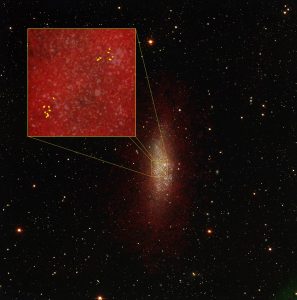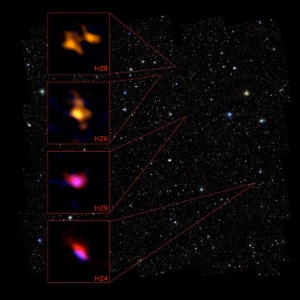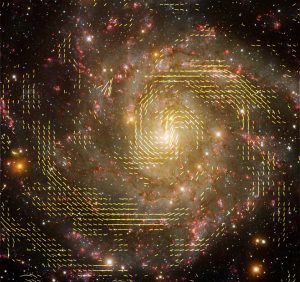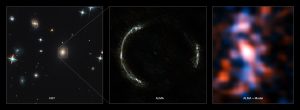There may be fewer pairs of supermassive black holes orbiting each other at the cores of giant galaxies than previously thought.
Astronomers Discover How Lowly Dwarf Galaxy Gets Concentrated Star Power
Dwarf galaxy WLM reveals its star-forming secrets.
ALMA Detects First Traces of Carbon ‘Smog’ Permeating Atmospheres of Early Galaxies
ALMA detected ionized carbon in bevy of early galaxies.
Magnetic-Field Discovery Gives Clues to Galaxy Formation Processes
Astronomers making a detailed, multi-telescope study of a nearby galaxy have discovered a magnetic field coiled around the galaxy’s main spiral arm.
VLA Reveals Bashful Black Hole in Neighboring Galaxy
Thanks to the extraordinary sensitivity of the Karl G Jansky Very Large Array (VLA), astronomers have detected what they believe is the long-sought radio emission coming from a supermassive black hole at the center of one of our closest neighboring galaxies.
Astronomers ‘Unscramble’ Einstein Ring to Reveal Star Formation in the Distant Universe
ALMA’s Long Baseline Campaign reveals hidden views of lensed galaxy SDP.81.











